
Time-Saving Tools & Gadgets
Here are some tools and gadgets our Test Kitchens crew and editors recommend for getting dinner on the table superfast. Armed with these handy equipment must-haves, you can cut down on your time in the kitchen and actually spend more time with the ones you love.
Blender

A blender is a necessity when making quick frozen beverages, sensational smoothies, and slushy drinks. If you make frozen beverages often, choose a blender with an ice-crushing mode.
Chef’s Knife

The chef’s knife is the workhorse of the Cooking Light Test Kitchens. It’s ideal for chopping herbs, onions, garlic, fruits, and vegetables, and for cutting boneless meats, slicing and dicing, and general cutting tasks.
Citrus Press

For the best flavor, fresh citrus juice can’t be beat. A citrus press is a quick and easy way to get a lot of juice from your fruit. To get the most juice, bring your fruit to room temperature before pressing it.
Food Processor

A food processor is a handy piece of equipment that can save time. Use the shredder blade to quickly shred vegetables such as potatoes and carrots.
Garlic Press

A garlic press is a real timesaver. It crushes garlic right into your pan or bowl. You don’t even have to peel the clove.
Graters
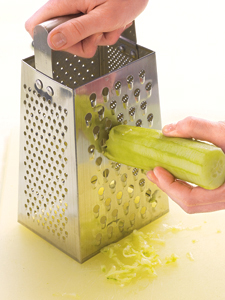
Graters, whether handheld or box, are kitchen tools that speed up preparation time. Use the smaller holes for grating hard cheese or chocolate. For ingredients such as cheddar cheese or carrots, the largest holes work best.
Grill Pan

A grill pan is a good alternative to a gas or charcoal grill. Meat and fish turn out juicy, with no need for added fat, and you save time by not having to heat up a traditional grill.
Kitchen Shears

Keep kitchen shears on hand to mince small amounts of herbs, chop canned tomatoes, trim fat from meat and skin from poultry, and make slits in bread dough.
Microplane®Grater
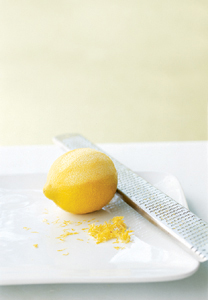
When it comes to finely grating foods, nothing works better or faster than a Microplane grater. It works great on everything from hard cheese and citrus fruits to chocolate.
Measuring Cups and Spoons

While every kitchen needs these tools, we recommend at least two sets of each in a variety of sizes. With multiples, you’ll save time by not having to rinse in the middle of a recipe.
Panini Press
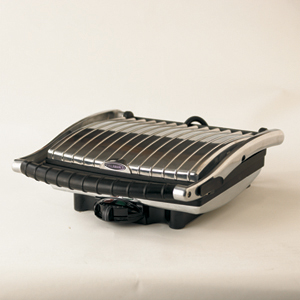
A panini press is great for making hot sandwiches quickly. You can find one at most kitchen stores.
Peeler
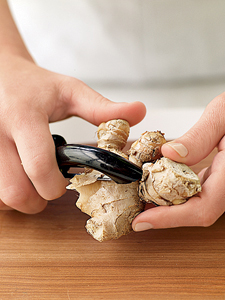
A peeler removes the skin from vegetables and fruits, as well as the gnarled roots of fresh ginger. Select one with a comfortable grip and an eyer to remove potato eyes and other blemishes. It also makes quick work of shaving Parmesan cheese and curling chocolate.
Peppermill
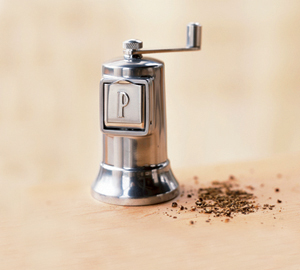
Give your food a bit of pungent flavor with a quick turn of a peppermill for a sprinkle of cracked or freshly ground black pepper. It’s a gotta-have kitchen gadget for quick cooking.
Pitter

An easy-to-use pitter is the perfect tool to easily remove olive and cherry pits.
Pizza Cutter
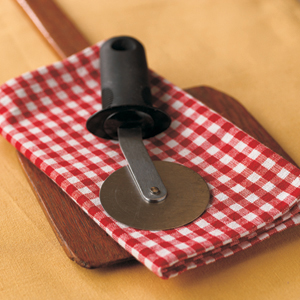
Everyone needs a pizza cutter for cutting pizza. But it also works great for cutting toast, focaccia, and even pancakes or waffles.
Vegetable Steamer
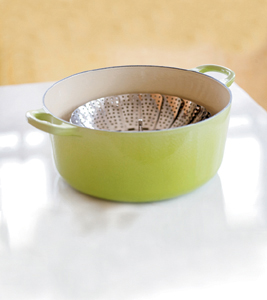
Steaming vegetables helps them retain their water-soluble vitamins. It’s a quick and easy process, especially when you use a collapsible metal vegetable steamer. Using this tool will assist you in getting vegetable sides on your table in a flash.
Nutritional Analysis
How to Use It and Why
Glance at the end of any Cooking Light recipe, and you’ll see how committed we are to helping you make the best of today’s light cooking. With chefs, registered dietitians, home economists, and a computer system that analyzes every ingredient we use, Cooking Light gives you authoritative dietary detail like no other magazine. We go to such lengths so you can see how our recipes fit into your healthful eating plan. If you’re trying to lose weight, the calorie and fat figures will probably help most. But if you’re keeping a close eye on the sodium, cholesterol, and saturated fat in your diet, we provide those numbers, too. And because many women don’t get enough iron or calcium, we can help there, as well. Finally, there’s a fiber analysis for those of us who don’t get enough roughage.
Here’s a helpful guide to put our nutritional analysis numbers into perspective. Remember, one size doesn’t fit all, so take your lifestyle, age, and circumstances into consideration when determining your nutrition needs. For example, pregnant or breast-feeding women need more protein, calories, and calcium. And women older than 50 need 1,200mg of calcium daily, 200mg more than the amount recommended for younger women.
| In Our Nutritional Analysis, We Use These Abbreviations: | |
| sat | saturated fat |
| mono | monounsaturated fat |
| poly | polyunsaturated fat |
| CARB | carbohydrates |
| CHOL | cholesterol |
| CALC | calcium |
| g | gram |
| mg | milligram |
| Daily Nutrition Guide | |||
| Women Ages 25 to 50 |
Women Over 50 |
Men Over 24 |
|
| Calories | 2,000 | 2,000 or less | 2,700 |
| Protein | 50g | 50g or less | 63g |
| Fat | 65g or less | 65g or less | 88g or less |
| Saturated Fat | 20g or less | 20g or less | 27g or less |
| Carbohydrates | 304g | 304g | 410g |
| Fiber | 25g to 35g | 25g to 35g | 25g to 35g |
| Cholesterol | 300mg or less | 300mg or less | 300mg or less |
| Iron | 18mg | 8mg | 8mg |
| Sodium | 2,300mg or less | 1,500mg or less | 2,300mg or less |
| Calcium | 1,000mg | 1,200mg | 1,000mg |
The nutritional values used in our calculations either come from The Food Processor, Version 8.9 (ESHA Research), or are provided by food manufacturers.
Metric Equivalents
The information in the following charts is provided to help cooks outside the United States successfully use the recipes in this book. All equivalents are approximate.
